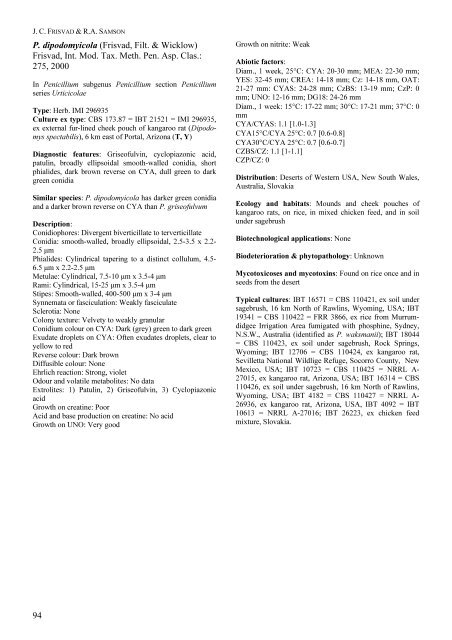Fig. 46. Penicillium digitatum. 7-day old colonies on A. CYA, B ... - CBS
Fig. 46. Penicillium digitatum. 7-day old colonies on A. CYA, B ... - CBS
Fig. 46. Penicillium digitatum. 7-day old colonies on A. CYA, B ... - CBS
Create successful ePaper yourself
Turn your PDF publications into a flip-book with our unique Google optimized e-Paper software.
J. C. FRISVAD &R.A.SAMSON<br />
P. dipodomyicola (Frisvad, Filt. & Wicklow)<br />
Frisvad, Int. Mod. Tax. Meth. Pen. Asp. Clas.:<br />
275, 2000<br />
In <str<strong>on</strong>g>Penicillium</str<strong>on</strong>g> subgenus <str<strong>on</strong>g>Penicillium</str<strong>on</strong>g> secti<strong>on</strong> <str<strong>on</strong>g>Penicillium</str<strong>on</strong>g><br />
series Urticicolae<br />
Type: Herb. IMI 296935<br />
Culture ex type: <strong>CBS</strong> 173.87 = IBT 21521 = IMI 296935,<br />
ex external fur-lined cheek pouch of kangaroo rat (Dipodomys<br />
spectabilis), 6 km east of Portal, Ariz<strong>on</strong>a (T, Y)<br />
Diagnostic features: Griseofulvin, cyclopiaz<strong>on</strong>ic acid,<br />
patulin, broadly ellipsoidal smooth-walled c<strong>on</strong>idia, short<br />
phialides, dark brown reverse <strong>on</strong> <strong>CYA</strong>, dull green to dark<br />
green c<strong>on</strong>idia<br />
Similar species: P. dipodomyicola has darker green c<strong>on</strong>idia<br />
and a darker brown reverse <strong>on</strong> <strong>CYA</strong> than P. griseofulvum<br />
Descripti<strong>on</strong>:<br />
C<strong>on</strong>idiophores: Divergent biverticillate to terverticillate<br />
C<strong>on</strong>idia: smooth-walled, broadly ellipsoidal, 2.5-3.5 x 2.2-<br />
2.5 μm<br />
Phialides: Cylindrical tapering to a distinct collulum, 4.5-<br />
6.5 μm x 2.2-2.5 μm<br />
Metulae: Cylindrical, 7.5-10 μm x 3.5-4 μm<br />
Rami: Cylindrical, 15-25 μm x 3.5-4 μm<br />
Stipes: Smooth-walled, 400-500 μm x 3-4 μm<br />
Synnemata or fasciculati<strong>on</strong>: Weakly fasciculate<br />
Sclerotia: N<strong>on</strong>e<br />
Col<strong>on</strong>y texture: Velvety to weakly granular<br />
C<strong>on</strong>idium colour <strong>on</strong> <strong>CYA</strong>: Dark (grey) green to dark green<br />
Exudate droplets <strong>on</strong> <strong>CYA</strong>: Often exudates droplets, clear to<br />
yellow to red<br />
Reverse colour: Dark brown<br />
Diffusible colour: N<strong>on</strong>e<br />
Ehrlich reacti<strong>on</strong>: Str<strong>on</strong>g, violet<br />
Odour and volatile metabolites: No data<br />
Extrolites: 1) Patulin, 2) Griseofulvin, 3) Cyclopiaz<strong>on</strong>ic<br />
acid<br />
Growth <strong>on</strong> creatine: Poor<br />
Acid and base producti<strong>on</strong> <strong>on</strong> creatine: No acid<br />
Growth <strong>on</strong> UNO: Very good<br />
Growth <strong>on</strong> nitrite: Weak<br />
Abiotic factors:<br />
Diam., 1 week, 25°C: <strong>CYA</strong>: 20-30 mm; MEA: 22-30 mm;<br />
YES: 32-45 mm; CREA: 14-18 mm; Cz: 14-18 mm, OAT:<br />
21-27 mm: <strong>CYA</strong>S: 24-28 mm; CzBS: 13-19 mm; CzP: 0<br />
mm; UNO: 12-16 mm; DG18: 24-26 mm<br />
Diam., 1 week: 15°C: 17-22 mm; 30°C: 17-21 mm; 37°C: 0<br />
mm<br />
<strong>CYA</strong>/<strong>CYA</strong>S: 1.1 [1.0-1.3]<br />
<strong>CYA</strong>15°C/<strong>CYA</strong> 25°C: 0.7 [0.6-0.8]<br />
<strong>CYA</strong>30°C/<strong>CYA</strong> 25°C: 0.7 [0.6-0.7]<br />
CZBS/CZ: 1.1 [1-1.1]<br />
CZP/CZ: 0<br />
Distributi<strong>on</strong>: Deserts of Western USA, New South Wales,<br />
Australia, Slovakia<br />
Ecology and habitats: Mounds and cheek pouches of<br />
kangaroo rats, <strong>on</strong> rice, in mixed chicken feed, and in soil<br />
under sagebrush<br />
Biotechnological applicati<strong>on</strong>s: N<strong>on</strong>e<br />
Biodeteriorati<strong>on</strong> & phytopathology: Unknown<br />
Mycotoxicoses and mycotoxins: Found <strong>on</strong> rice <strong>on</strong>ce and in<br />
seeds from the desert<br />
Typical cultures: IBT 16571 = <strong>CBS</strong> 110421, ex soil under<br />
sagebrush, 16 km North of Rawlins, Wyoming, USA; IBT<br />
19341 = <strong>CBS</strong> 110422 = FRR 3866, ex rice from Murrumdidgee<br />
Irrigati<strong>on</strong> Area fumigated with phosphine, Sydney,<br />
N.S.W., Australia (identified as P. waksmanii); IBT 18044<br />
= <strong>CBS</strong> 110423, ex soil under sagebrush, Rock Springs,<br />
Wyoming; IBT 12706 = <strong>CBS</strong> 110424, ex kangaroo rat,<br />
Sevilletta Nati<strong>on</strong>al Wildlige Refuge, Socorro County, New<br />
Mexico, USA; IBT 10723 = <strong>CBS</strong> 110425 = NRRL A-<br />
27015, ex kangaroo rat, Ariz<strong>on</strong>a, USA; IBT 16314 = <strong>CBS</strong><br />
110426, ex soil under sagebrush, 16 km North of Rawlins,<br />
Wyoming, USA; IBT 4182 = <strong>CBS</strong> 110427 = NRRL A-<br />
26936, ex kangaroo rat, Ariz<strong>on</strong>a, USA, IBT 4092 = IBT<br />
10613 = NRRL A-27016; IBT 26223, ex chicken feed<br />
mixture, Slovakia.<br />
94

















